Buy pumpkins at Huerta de Pancha. They are not excessively large, but this is the case because we give more priority to taste than to size. You can buy our seasonal pumpkins, which arrive at your table directly from the harvest, without being refrigerated. The best organic pumpkins come from the Axarquía region.
Characteristics of Pancha’s pumpkins
Huerta de Pancha’s pumpkins are of the butternut variety, peanut-shaped, or also known as fiddle pumpkins.. Its weight ranges from 750 grams to 2 kg. its skin is orange, hard and thin compared to other varieties of squash, but thicker than other squashes of the same genus, such as courgettes; being hard, it must be peeled with force. Its pulp is creamy and sweet, with a slight hint of nutty flavour, and in which we can find a cavity where the seeds are placed.
Pumpkin pulp can be eaten raw (shredded or blended), or cooked. (boiled, roasted, microwaved or pan-fried). There are many dishes that can be made with this vegetable, such as angel’s hair, which is used in confectionery.
The seeds can be roasted and salted, eaten raw or steamed.
Types of pumpkins that exist
There are four main groups of pumpkins. Within them, there are a number of varieties, but we will mainly talk about the groups. They are Pepo, moschata, maximum and mixed pumpkin.
The Pepo pumpkin is orange or green, small to medium-sized. It is the typical pumpkin that we see during the months of October and November, coinciding with Halloween. The varieties of Pepo pumpkins are the maximum curcubita, Pepo spaghetti, Patisson, kabocha or Japanese, acorn, crookneck and rondin pumpkin.
The moschata or moscadas pumpkins are golden or orange in colour and medium-sized. Its shape is not rounded, but rather oblong. They are characterised by their sweetness. The most typical mustard pumpkins are Butternut, Tamalayote, Provence and Loche.
Regarding the maximum pumpkin varietyIts colour is yellow, but it can also be blue or blue-green. They come in all sizes, and their flesh is the most bitter. These varieties are Banana, Hubbard, Giant, Jarrahdale or Aladdin.
Finally, mixed pumpkins They can be of various colours, and are not very large. In this case, they are not only used for eating, but above all for decorative purposes.
How you will receive the pumpkin from La Huerta de Pancha’s vegetable garden
Our pumpkin is harvested at its optimum point. This point is not the same as maturation. For packaging, although it is not a fragile product, we try to protect it from damage during transport. The pumpkin is delivered to your door ready to eat.
Our pumpkins retain all their freshness and natural flavour because they do not go through cold storage. They are a real treat.
Pumpkin crops in our vegetable garden
Pumpkin is a creeping annual plant.which has very long stems covered with coarse hairs. These stems can reach up to 10 metres in length. Its leaves are lobed and heart-shaped, and its flowers are large and beautiful, with yellow or white petals.
For optimal cultivation, a large amount of daily light and a temperature of between 20 and 25ºC are necessary. It is advisable to remove the soil, thus avoiding the appearance of weeds.
This pumpkin needs a lot of water for its vegetative development; watering should be frequent and regular.. In addition, we have to be careful to find the middle ground, so that the soil does not lack water but does not become waterlogged and the roots rot.
It is essential to prune the plant, eliminating secondary branches.
Harvesting is done by cutting about 5 centimetres of stem. instead of plucking them directly from the plant. Harvesting is done about six months after sowing, obtaining the best pumpkins in La Axarquía.
Properties of pumpkin
The properties of pumpkin are innumerable. It contributes to the health of the skin, bones and teeth, as well as the nervous system and the digestive system.
Its main component is water, which, together with its low carbohydrate content and zero fat, makes it a low-calorie and very satiating food.
Pumpkins are high in fibre, vitamins A, C and E, and several B vitamins.
This vegetable is also rich in minerals, including potassium, and amino acids.
Properties of pumpkin seeds
Pumpkin seeds deserve a special mention, as they are a superfood in themselves. with important nutritional properties. They have a mild, slightly sweet taste, and can be eaten raw, dried and roasted.. They are rich in magnesium, a mineral that is essential for a healthy gut, heart, teeth and bones, as well as regulating blood pressure; zinc, which boosts the immune system and regulates mood, is also very important.
Pumpkin seeds contain tryptophanwhich helps to regulate sleep. They also contain Omega 3 and 6 fatty acids and have a strong anti-inflammatory power.
How do you eat pumpkin?
Pumpkin pulp can be eaten raw, mainly grated like a carrot or blended to make juice. Traditionally it is consumed mainly cooked, it can be cooked, roasted, in the microwave and even in the pan. It is used in numerous culinary preparations: in cream, soups, broths, purees, baked, steamed, boiled, sautéed, sautéed, gratin, as a complement to stews, as a garnish, in cakes, cakes, custards, on pizza, etc. . It is also used to prepare jams, syrups or jams. The angel hair with which sweets and cakes are filled is made with the confectionery variety.
Pumpkin seeds can be roasted and salted, but then some of the oils they contain are damaged. They can also be eaten raw or steamed together with the pulp and then eaten peeled with the teeth, thus better preserving all their properties.
How to cut the pumpkin?
When you see the shape of the pumpkin it seems impossible to cut it and remove the skin, but we are going to explain step by step an easy way to cut it so that you can do it without any problem.
First of all, it is necessary to have a sharp, decent quality onion or chef’s knife because they have a very tough skin.
The fingers holding the pumpkin must be flexed before the cut is made, at a 45-degree angle, with the knuckles resting on the blade of the knife. This will keep you from cutting yourself.
Now we will proceed to cut the pumpkin. The first step is to cut the two ends (the stem part and the base) as a slice.
Then we are going to cut it in half. A trick to make it easier for you is to run the knife along the contour and then rest your palm on top of the knife and press downwards.
We can use a spoon or scissors to empty the seeds inside. Now, place each of the pieces with the bases facing upwards and peel from top to bottom, removing the outer shell. And voilà, it’s already peeled!
It can be cut into slices, slices, sticks, small squares or chunks.
What is the flavor of pumpkin?
The flavor of pumpkin is sweet and mild, similar to carrots. It is slightly earthy and may have slightly bitter notes, depending on the variety.
How do you know if a pumpkin is good?
A number of steps can be followed to check if a pumpkin is good.
A fresh, good quality pumpkin should be heavier than it looks. If it is lighter, it may be overdone.
The skin of the pumpkin should be firm and smooth, without spots or wrinkles. Avoid pumpkins with bumps or bruises, as they may indicate internal damage.
The color of the pumpkin may vary according to the variety, but in general it should have a uniform and vibrant color. Avoid pumpkins with stains or discolorations.
The stem of the pumpkin must be intact and dry. If the stem is green or wet, it may mean that it is not ripe or has been improperly stored.
How long can a pumpkin last?
A pumpkin can last up to several months if stored properly. Under optimal conditions, i.e. in a cool, dry place, a pumpkin can last 2 to 3 months. However, once it is cut or opened, its shelf life is considerably reduced, and it should be consumed within a few days.
Nutritional Information
Nutritional value
Calories 28 kcal.
Proteins 1.13 g.
Carbohydrates 4.59 g.
Fiber 2.16 g.
Total fat 0.13 g.
Water 92 g.
Calcium 22 mg.
Iron 0.80 mg.
Iodine 1.40 mg.
Magnesium 8 mg.
Zinc 0.20 g.
Sodium 3.10 mg.
Potassium 304 mg.
Vitamin B2 Riboflavin 0.07 mg.
Vitamin B6 Pyridoxine 0.11 mg.
Folic Acid 336 mg.
Vitamin C 12 mg.
91 reviews for Pumpkins
Customer Images
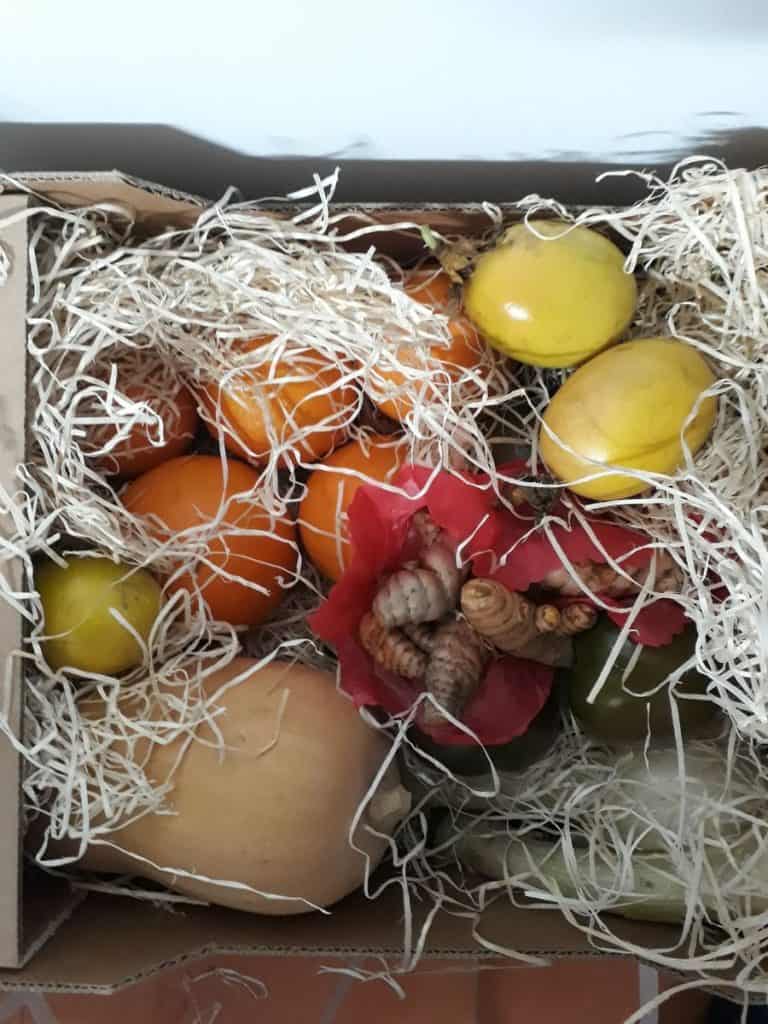

Conchi Lopez
Muy rica

Sorry, no reviews match your current selections
Products related
4,50€ Original price was: 4,50€.2,94€Current price is: 2,94€. Iva Incluido6,43€4,20€ /kg
1,75€ Original price was: 1,75€.1,65€Current price is: 1,65€. Iva Incluido3,50€3,30€ /kg


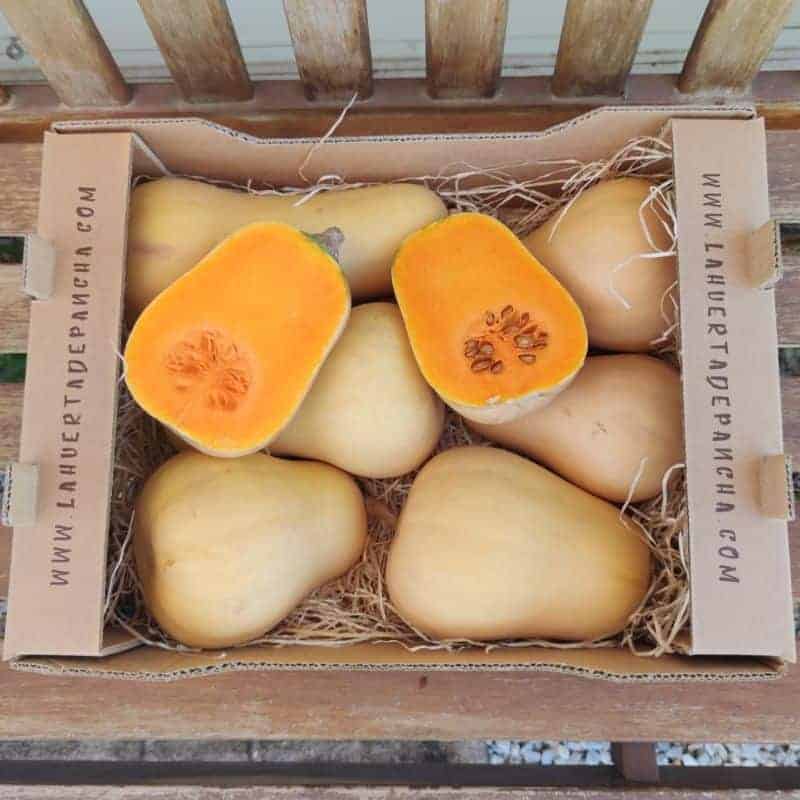
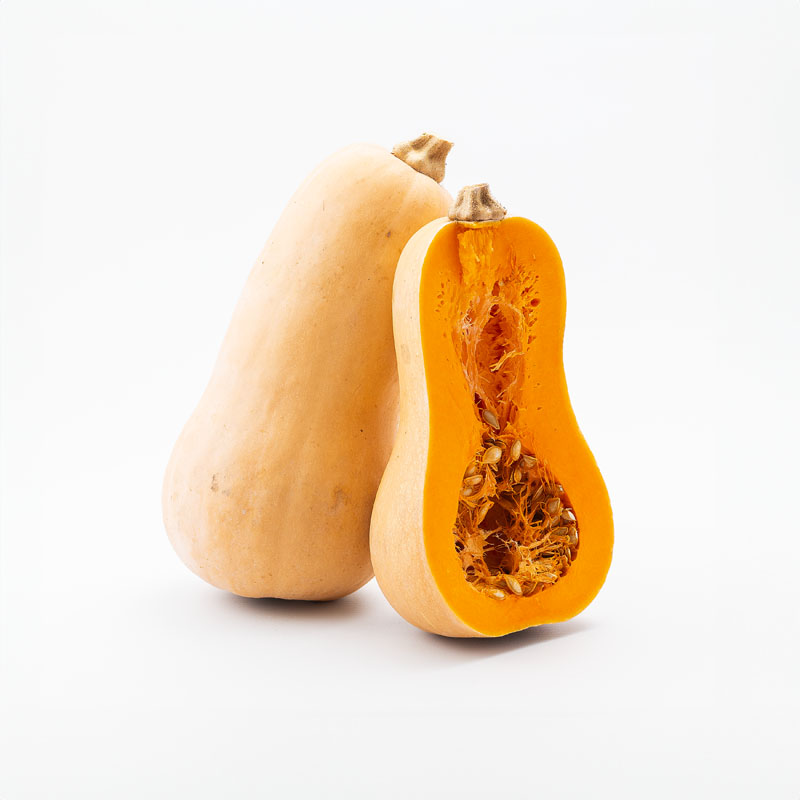
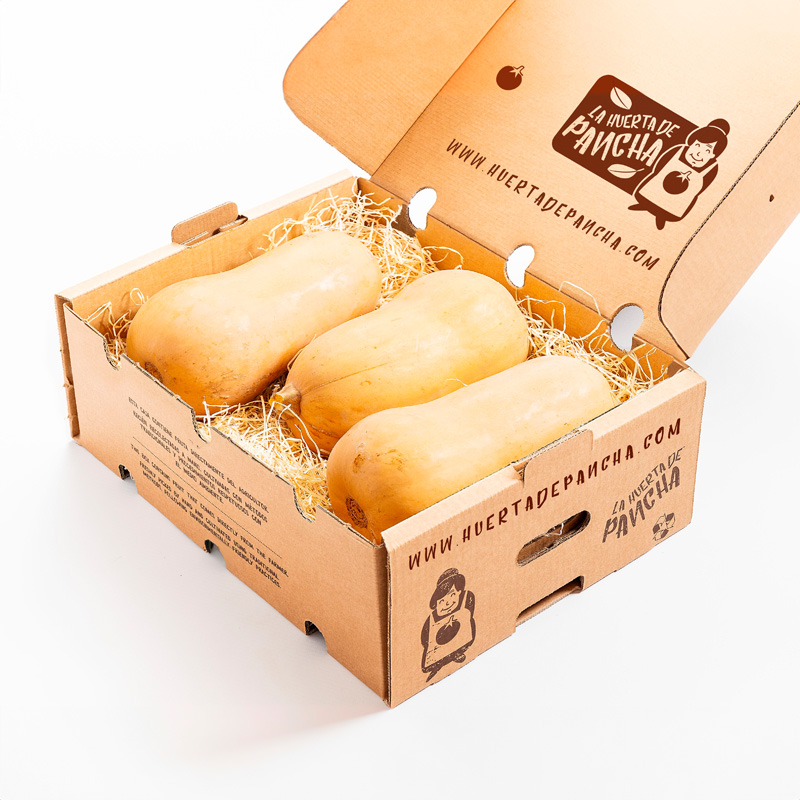
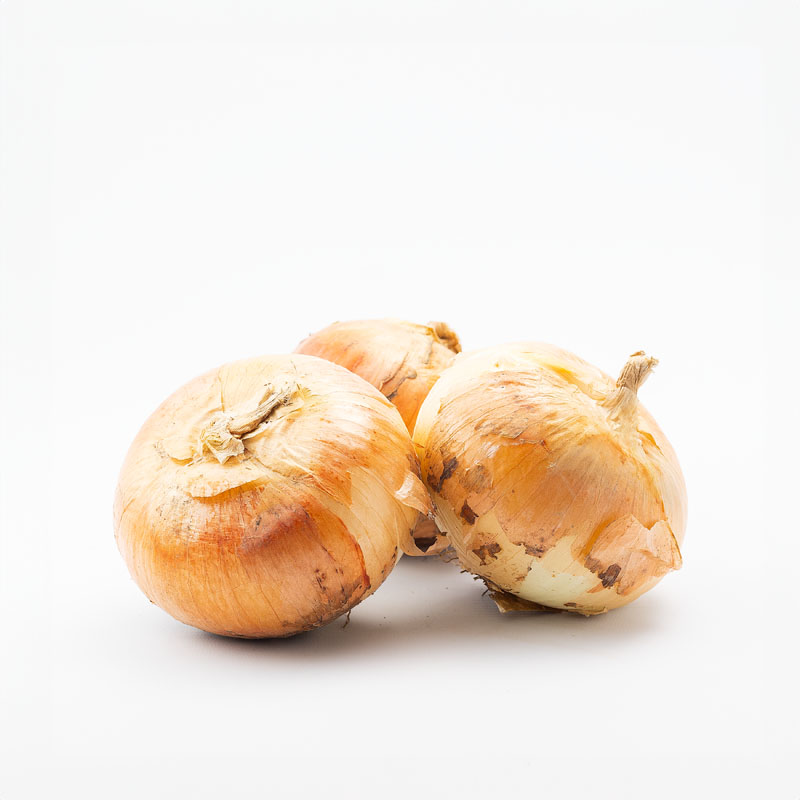
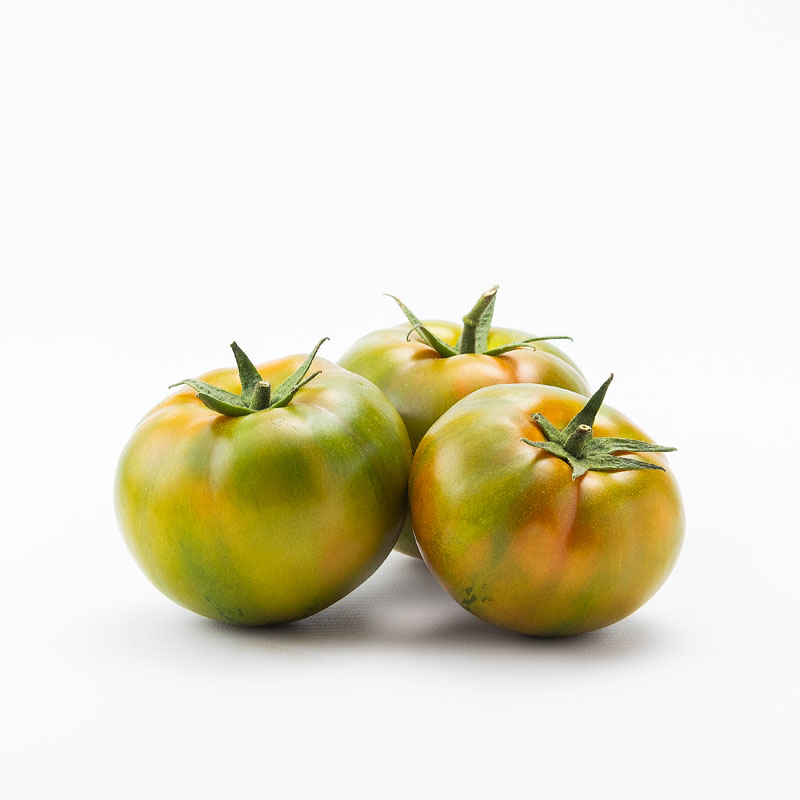






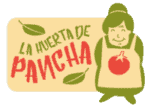
Muy buenas
Buenisimos
Muy ricas
Purés de primera
Bien